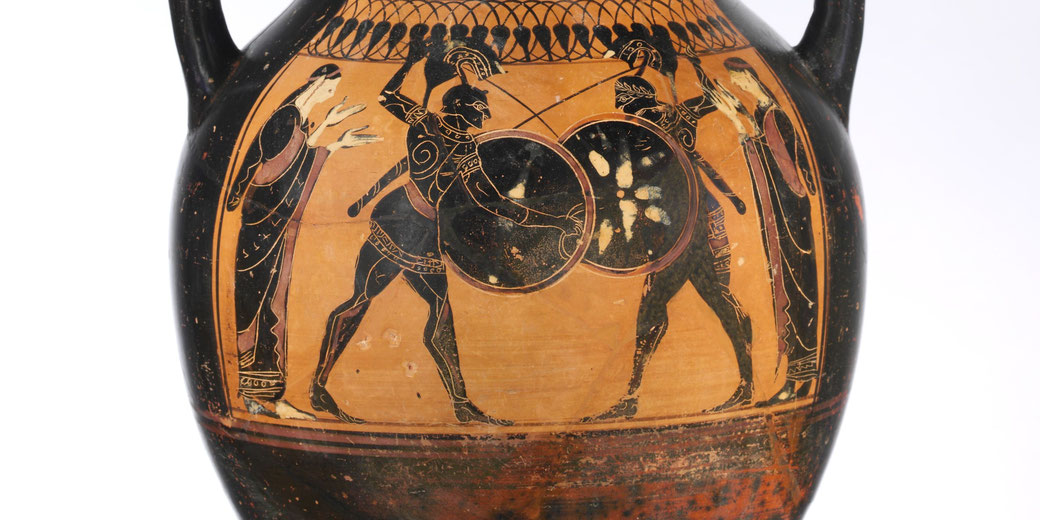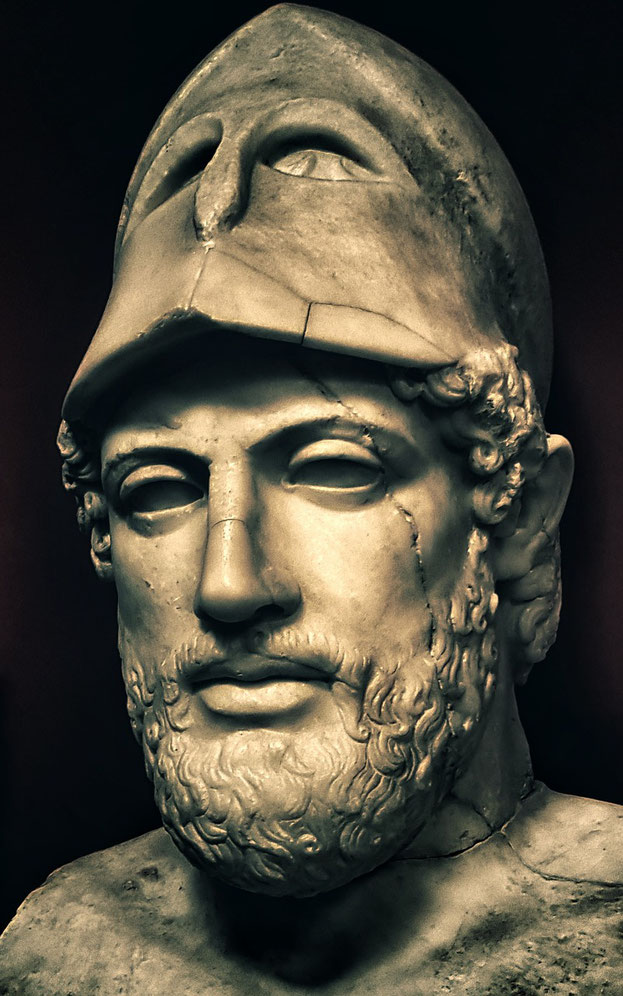The Peloponnesian War: The brutal conflict that destroyed the ancient Athenian empire

The Peloponnesian War was a brutal conflict which was fought between 431 BC and 404 BC between the Athenian Empire and the Peloponnesian League, which was led by Sparta.
In total, the war lasted for 27 years and resulted in the dramatic downfall of the Athenian Empire and the rise of Sparta as the dominant Greek city-state.
It would be the most traumatic and influential struggle in all of ancient Greek history.
The growing power struggle in ancient Greece
After the Greco-Persian Wars (499-479 BC), Athens and Sparta were the two leading city-states in Greece.
As a result, they both sought to extend their own influence over other Greek cities which meant that their spheres of control frequently caused tension.
Crucially, Athens and Sparta had different forms of government, different economic systems, and different approaches to how they treated their allies.
For example, Athens had become a significant economic power in Greece thanks to the Delian League, which Sparta was not a part of.
This league was officially an alliance of city-states that paid Athens tribute.
In 454 BC, the treasury of the Delian League was moved from Delos to Athens itself.
This made the other members of the league resent Athens. Regardless, this move made Athens very wealthy and allowed them to build a large navy.
Sparta, on the other hand, was the leading land military power in Greece. Their army was feared by many, and they had a reputation as the best warriors in the Greek world.
Around this time, Sparta was becoming worried about the growing power of Athens.
In fact, the Spartans had formed their own alliance system, known as the Peloponnesian League.
The league was made up of city-states that were under Spartan control.
However, things became complicated when members of the Delian and Peloponnesian Leagues began entering into conflict with each other.
The two different leagues had been involved in an early conflict that has become known as The First Peloponnesian War, which lasted from around 460 to 446 BC.
This primarily involved the cities of Athens and Corinth, who was a Spartan ally.
This war ended by an agreed treaty, known as the Thirty Year's Peace.
However, this agreement would not last the intended thirty years and tensions between the two sides would eventually begin the Second Peloponnesian War in 431 BC.
The second of the two wars is usually referred to as the Peloponnesian War proper.
Who were the key leaders of the Peloponnesian War?
There were several key players involved in the Peloponnesian War. The two most important were Pericles of Athens and Lysander of Sparta.
Pericles was a prominent Athenian politician who served as the leader of the Delian League during the first phase of the war.
He was known for his speaking skills and his ability to rally support for Athens.
He also implemented a series of reforms that strengthened Athens militarily, economically, and politically.
In comparison, Lysander was a Spartan general who served as the leader of the Peloponnesian League during the second phase of the war.
He was known for his military talents and his famous victory at the Battle of Aegospotami, which would effectively end the war.

What caused the Peloponnesian War?
The Thirty Years' Peace came to an end due to a series of events, which began in 432 BC.
In that year, Athens had demanded that the city of Poteidaia remove their fortifications so that Athens could trade safely in the region of Thrace.
However, the Poteidaians saw this as a direct threat, and asked Sparta for help. In response to this, Athens laid siege to the city.
Athens then issued a ruling called the Megarian Decrees, which were sanctions imposed by Athens on the nearby city of Megara, which banned them from trading in the markets of the Athenian Empire.
This would result in significant economic losses for the city and force it to become a subject state to Athens.
So, Megara also appealed to its ally, Sparta, for help. In response, Sparta demanded that Athens retract the decree.
Athens refused to do so, which many people feared would lead to war again.
However, the Spartans did not restart conflict immediately, but began preparing for the inevitable war.
Finally, when one of Sparta's allies, the city of Thebes, attacked Plataea, one of Athens' allies in 431 BC, the Peloponnesian army, led by the Spartan king Archidamus II, invaded Attica, and the Peloponnesian War began.
Outline of the war
In total, there were two major periods of fighting interspersed with several years of truce.
The first phase of the war, known as the Archidamian War, lasted from 431 to 421 BC.
The second phase, known as the Decelean War, lasted from 415 to 404 BC.
Major events of the Archidamian War
The Archidamian War began with the initial Spartan invasion of Attica, which was the region around Athens.
This invasion was led by King Archidamus II. The Spartans were hoping to weaken Athens by destroying its crops and livestock.
In response to the Spartan invasion, Pericles implemented a strategy known as the Long Walls Strategy.
This involved sheltering the populace of Athens and Attica behind the newly constructed walls that connected the city of Athens to its port city of Piraeus.
This allowed Athens to import food and supplies from other city-states via the sea, thereby negating the effects of the Spartan invasion.
However, in 430 BC, a devastating plague broke out in Athens, which killed many people due to the cramped conditions inside the city, including Pericles himself.
In spite of this setback, Athens was able to continue fighting. However, neither side was able to score a decisive victory over the other.
In 428 BC, Athens defeated Lesbos and in 427, Plataea was defeated by Sparta.
In 426 BC, the Athenian general Demosthenes commanded 40 triremes in a campaign against Pylos, where they defeated the Spartans stationed at Sphacteria.
Then, in 424 BC, the Athenians launched an invasion against Megara and Boeotia, but it was a failure that resulted in a severe defeat near Delion.
However, Athens did manage to capture the Spartan-controlled island of Kythera.
The Spartans likewise had victories under their general Brasidas and were employing non-Spartan hoplites for the first time.
Specifically, they were able to seize several key cities in Attica.
Then, in 424 BC, the Spartans besieged and then successfully captured the important Athenian ally of Amphipolis in Thrace.
In 422 BC, when the Athenian leader Cleon tried to recapture it, both he and the Spartan General Brasidas were killed in the fighting.
Exhausted and locked in a stalemate, in 421 BC, the two sides signed a peace treaty known as the Peace of Nicias.
This ended the Archidamian War stage of the war and ushered in a period of truce that was meant to last for fifty years.
However, it would only last for six.
The Sicilian expedition
In 415 BC, Athens sent a massive military expedition to support its isolated colony on the island of Sicily.
The expedition was led by the two Athenian commanders, Alcibiades and Nicias.
The purpose of this venture was to stop the Athenian colony from being conquered by the city of Syracuse, which was an ally of Sparta.
The expedition was initially successful and was able to capture several cities.
However, due to disagreements among the commanders, as well as a failed assault on Syracuse itself, the expedition ended in disaster.
In fact, nearly the entire Athenian army was killed or captured, and Nicias was taken prisoner.
For his part, Alcibiades switched his allegiance and fled to Sparta, where he would become an important advisor in an attempt to help defeat Athens.
Unfortunately, this expedition was a major blow to Athens both militarily and politically.
Major events of the Decelean War
The Decelean War was fought from 415 to 404 BC. This phase of the war focused more on sea battles.
However, in order to challenge Athens on the water, Sparta needed to invest heavily in building triremes.
To raise the necessary funds to build a fleet, Sparta turned to Persia. Persia was more than happy to provide financial support to Sparta in return for their help in defeating Athens.
This is because Persia had an interest in fostering regional instability in Greece.
In 410 BC, Sparta launched an assault on Athens. This was the second time that they had invaded Attica since the beginning of the war.
The Spartans were hoping to take advantage of the fact that much of the Athenian army was away fighting in Sicily.
However, the Spartans were unsuccessful in their assault and were forced to retreat.
Then, in 406 BC, the nw Spartan fleet suffered a humiliating defeat at the Battle of Arginusae.
This led them to ask for peace with Athens, which was surprisingly rejected.
A year later, in 405 BC, Athens' fleet was then defeated by the Spartans at the critical Battle of Aegospotami.
The overwhelming loss of ships and men in this battle made it practically impossible for Athens to rebuild its forces in time to counteract the Spartan victory, and Athens knew they had no choice but to surrender.
This effectively ended the entire war. Sparta then imposed a harsh peace treaty on the Athenians.
Specifically, it required Athens to pay reparations to Sparta, dismantle its navy, and give up its imperial ambitions.
How the defeat changed Athens forever
After the Peloponnesian War, both Athens and Sparta experienced significant changes.
Importantly, the Delian League was finally dissolved forever, and Athens lost its empire.
In the city of Athens itself, democracy was abolished and was replaced by a short-term tyranny led by Sparta.
However, this change in government did not last long, and a form of democracy returned.
Nevertheless, Athens would never return to the power it once held without the Delian League.
In comparison, Sparta's role in the Peloponnesian War led to its rise as the main power in Greece.
As a result, Sparta was able to impose its will on the other city-states in the region.
Unfortunately, it developed a negative reputation for its heavy-handed militarism.
This period of Spartan dominance is known as the Spartan Hegemony.
Ultimately, the real winner of the war may have been the Persia Empire. This is because the Peloponnesian War weakened Greece and made it more susceptible to future Persian manipulation.
Further reading
What do you need help with?
Download ready-to-use digital learning resources
Copyright © History Skills 2014-2025.
Contact via email
With the exception of links to external sites, some historical sources and extracts from specific publications, all content on this website is copyrighted by History Skills. This content may not be copied, republished or redistributed without written permission from the website creator. Please use the Contact page to obtain relevant permission.





